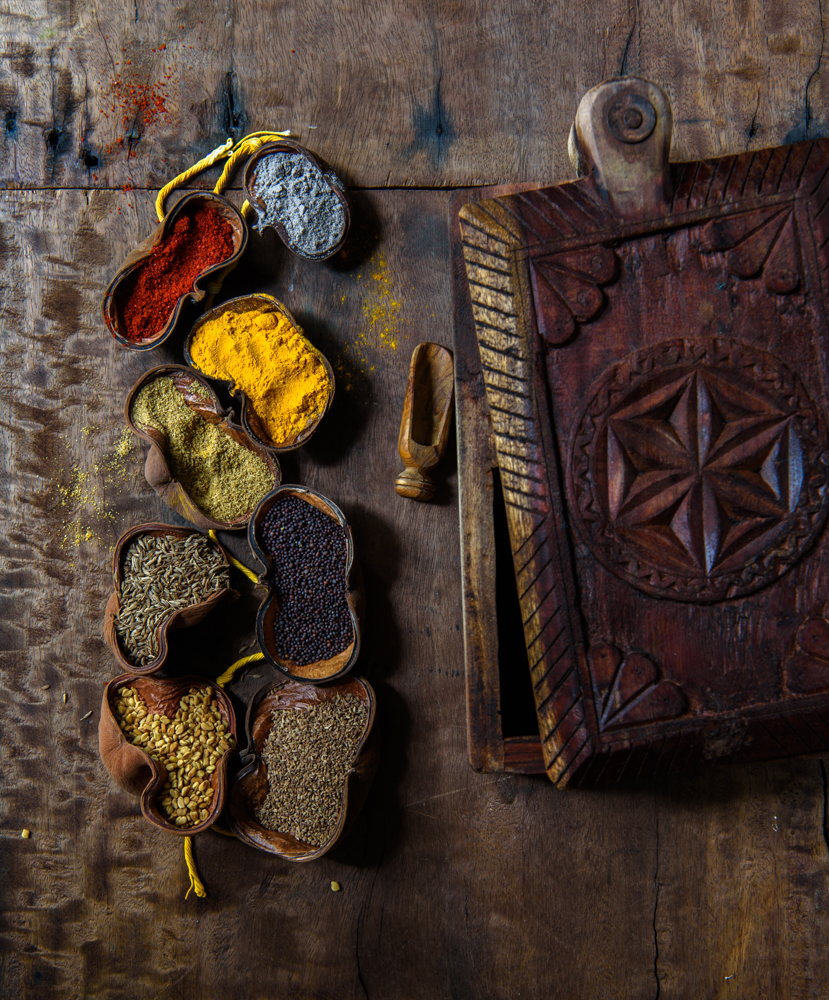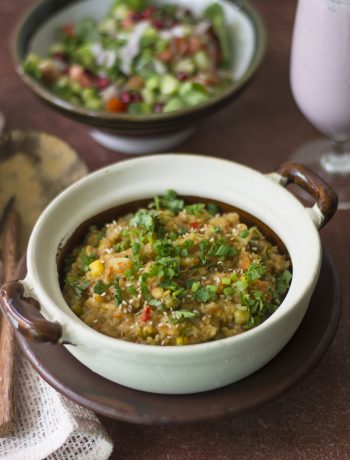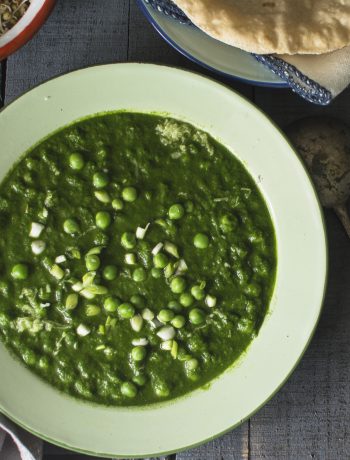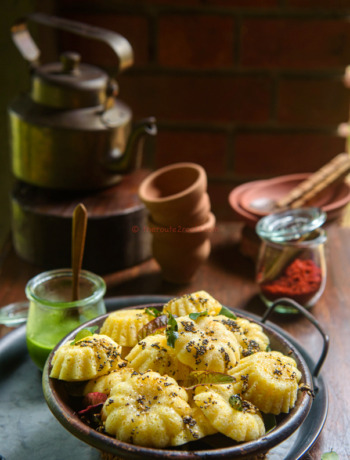Gujarati Spice Box is called Masaliyu but, mummy always called it Lakadiyu. I always wondered why she called a steel masala box, lakadiyu(wooden box)!! Apparently, the masala boxes were made of wood in those days, the reason they earned the name Lakadiyu.
Every region of India has its own spice staples which largely depends upon the cuisine and climate of the region. The basic contents of Gujarati Spice Box/Masaladan looks like so… starting from top
- Hing/asafetida,
- Lal marchu/lal mirchi ( depending on the family’s preference the choice of chili varies) in our family we use a mix of reshampatti- for heat+kashimiri-for color.
- Hldar/Haldi/turmeric powder,
- Dhana-jeeru/dhania-jeera powder- Gujaratis mix the coriander and cumin together
- Jeera/cumin seeds
- Rai/mustard seeds
- Methi/fenugreek seeds
- Ajmo/ajwain/carom seeds
We also have a secondary Masaldaan that houses whole spices like cardamom, cinnamon, cloves, whole red chilies etc.
The Gujaratis, for generations have been storing their masalas, wheat, rice, dals, oil annually. The practice has faded quite a lot but not as much. The communities in rural and semi-urban regions still follow this practice while in large cities, with the modern living spaces and lifestyles it is becoming difficult and rare to follow these traditions. The practice of annual soaring had a reason, the transportation of produce was poor, the storage facilities were non-existent, agrarian communities had cash on-hand during the season so it was better to barter and store grains. The modern irrigation facilities were absent and the crops were prone to failure due to droughts. The stored grains and staples provided much needed food security to the families. Come March and we get busy with the annual Masala season when we buy, clean, sun and grind the masala for annual storage.The new spices arrive in the market during this time and the ritual is followed religiously with each family having their choice of blends and suppliers. As it is with rest of India, we also take our Masalas very seriously and never compromise on quality. With changing times the work involved with this ritual has decreased considerably as earlier we had specialist womenfolk spend days together hand-pounding the masala in our compound and this was a sight in each house. The masala barni are cleaned and sunned, the whole haldi was washed and sunned so were whole chilies and coriander seeds. The chili powder was given an oil massage to help it remain pest free. Whole salt was kept with each of the masala jar to keep them pest free. Home smelled like heaven during those days of masala and wheat storing.






No Comments